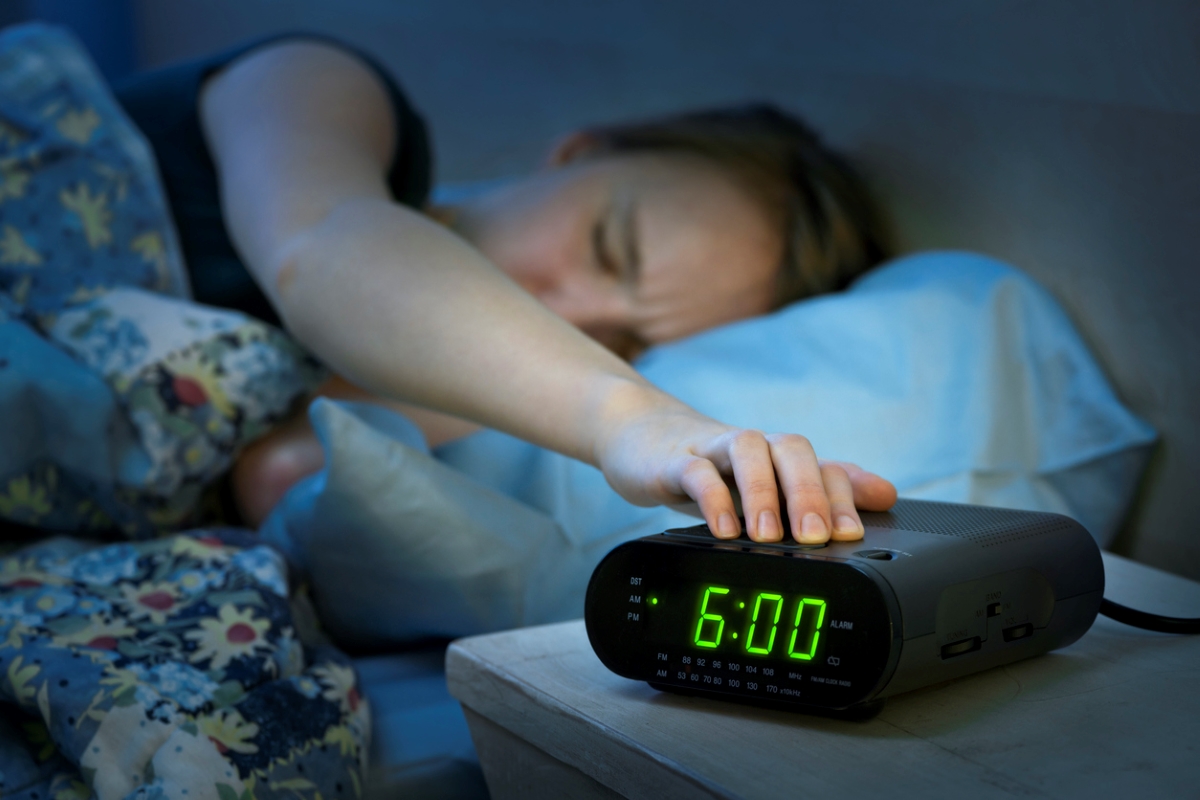We may earn revenue from the products available on this page and participate in affiliate programs. Learn More ›
Why do we lose an hour of sleep each spring only to gain it back in the fall? Blame founding father Benjamin Franklin, who suggested in a 1784 essay that people should get out of bed one hour earlier in the spring and summer to enjoy more natural light. Fast-forward to 1895, when New Zealand entomologist George Hudson proposed the modern version of daylight saving time to give him more time in the evenings to collect insects. The idea gained traction in Europe during World War I as a way to save coal, and the United States adopted DST in 1918. It was, however, repealed the following year.
Daylight saving time was reinstated as a wartime measure in 1942, but at the war’s end states and cities were free to decide whether to observe it or not. It wasn’t until 1966 that daylight saving time became official throughout most of the United States. (If you’re wondering “When does the time change?” this month, be ready to “spring forward” on March 12, 2023.)
Read on for a few more surprising facts about springing forward and falling back and the status of daylight savings time 2023.
1. The length of time daylight savings lasts has changed more than once.

In the United States, DST originally started in April and ended in October, but the Energy Policy Act of 2005 extended DST by 4 weeks. For daylight savings time 2023, Americans will set their clocks forward on the second Sunday in March and back on the first Sunday in November. DST was once even longer: In response to the Arab oil embargo of the early 1970s, Congress increased the length of daylight saving time to 10 months in 1974 and 8 months in 1975. The experiment was abandoned in 1976.
2. Not all U.S. states and territories observe DST.

Hawaii and most of Arizona (the exception being some Native American tribes) do not observe DST. Neither do most U.S. territories, including Puerto Rico, Guam, American Samoa, the Northern Mariana Islands, and the U.S. Virgin Islands. Current federal law does not allow other states to alter from the nationwide clock changes, despite some resolutions to make DST permanent.
3. Daylight saving killed the drive-in movie theater, or so some people believe.

A consortium of drive-in movie theater owners bitterly opposed the adoption of DST in 1966, because extending daylight into the evening meant that movies could not start at a family-friendly hour. There were more than 4,000 drive-in movie theaters across America in the mid-1960s. Today, only about 320 remain, and many enthusiasts say that DST is at least partly to blame.
4. DST exacerbates sleep deprivation.

Data from the U.S. Department of Labor Mine Safety and Health Administration has shown that on the Mondays after the switch to DST, workers sleep an average of 40 minutes less—and 5.7 percent more injuries occur than compared with other days. It can take weeks for sleep cycles to adapt to DST, and young children and adolescents have a particularly hard time adjusting to different sleep patterns. Other studies link the lack of sleep at the start of DST to accidents, depression, suicide, and even risk of stroke and miscarriages.
5. DST switches cause more car accidents.

According to a 2020 study in Current Biology, spring DST significantly increased risk of a fatal motor vehicle accident (MVA) by 6 percent and that the “”MVA risk increase waned in the week subsequent to DST.” However, “falling back” to standard time did not affect MVA risk, and supports the idea that sleep deprivation has something to do with the rise in traffic fatalities.
On the other hand, a 2022 study concluded that switching from DST back to standard time in the fall increased the number of deer-vehicle collisions by 16 percent. In this case, maintaining permanent DST could save some people and wildlife.
6. Heart attacks are more common on the Monday after daylight savings.

What does the time change do to our health? A 2017 study in the American Economic Journal: Applied Economics estimated that “the transition into DST caused over 30 deaths at a social cost of $275 million annually,” primarily attributable to sleep deprivation. A 2014 study by the University of Michigan Frankel Cardiovascular Center shows a 24 percent jump in the number of heart attacks on the Monday after DST compared with other Mondays throughout the year. A 2019 study also substantiated a modest uptick in risk of heart attack after DST transitions.
7. DST doesn’t actually save energy.

Opinions are split on whether DST actually saves energy. Daylight saving time was designed to help consumers take advantage of natural light and rely less on artificial light, which should in theory save electricity. Today, however, the widespread use of air conditioners, computers, and TV screens has virtually wiped out that energy savings. Savings also depend on location, since residents in cold climates might use more heat on dark mornings after the spring switch and those in hotter climates might up the use of air conditioning as the longer summer days heat up.
An often-cited study in the state of Indiana found that when they switched to DST in 2006, energy usage actually increased. But in 2017, an analysis of 44 such studies on the topic of DST and use of electricity reported a slight savings of 0.34 percent during daylight saving time.
8. Most Americans aren’t really on board with daylight saving time.

Regardless of where they live, about six in 10 Americans prefer choosing a permanent time to keeping clock changes. Most prefer the later year-round hours of DST, and about 13 percent want permanent earlier hours.
More than 40 percent of those asked in a 2016 survey by Rasmussen Reports said they do not believe that DST is an effective way to save energy, just 35 percent consider the time change “worth the hassle,” and 16 percent said that DST has made them early or late for an appointment because they didn’t reset their clocks properly.
9. When it’s lighter out in the evenings, shoppers tend to spend more money.

Malls, independent retailers, and companies in the sports, leisure, and tourism industries were early proponents of DST and continue to support it today. Having more daylight in the evening encourages people to go shopping and spend more time and money on outdoor activities, or even in restaurants. Although recent research is limited, a 2016 report from the JP Morgan Chase Institute said that consumer spending dropped 3.5 percent after the fall switch from DST to standard time.
Other studies have shown big bumps for golf industry revenue and convenience store sales. Companies that make outdoor grills and charcoal determined that they gained $200 million in sales when DST was extended.
10. Farmers are opposed to daylight savings.

Although many people think that DST was intended to benefit farmers, farmers argued strenuously against its adoption from the start, lobbying Congress unsuccessfully to repeal DST in 1919. Farmers rely on the sun and season, and dairy farmers in particular have been vociferously opposed to DST because cows are extremely sensitive to milking times. Further, most farmers appear to prefer more outdoor work time in the morning rather than the early evening, especially in hot climates.
11. Sleep experts support year-round standard time.

The American Academy of Sleep Medicine cited extensive research in its 2020 position statement on DST. Although many of the health and safety issues lie more with time transitions than with long-term effects of DST, the academy supports sticking with permanent standard time instead of DST, which differs from the Sunshine Protection Act’s adoption of permanent DST. Sleep doctors note that the light/dark cycle is key to circadian rhythm and that switching to permanent standard time best aligns with our biology and sleep health.
12. The Sunshine Protection Act could make DST permanent.

A national movement called Lock The Clock (#LockTheClock) has been underway to abolish DST. In March 2022, the United States Senate unanimously passed the Sunshine Protection Act of 2021, which would make daylight saving time permanent—no more changing clocks.
Policymakers in as many as 28 states also have introduced or considered introducing state laws on DST. But none of them can actually take effect until federal law allows it. And although the Sunshine Protection Act stipulates a November 2023 start date, as of February 2023 it still had not passed the House (and remained in committee). Thus, a “spring forward” 2023 remained likely. Reports in November 2022 said that Congress is waiting on results of a study from the Department of Transportation on the effects of a permanent change. The analysis is not due until December 2023, however, a month after the act was slated to take effect.


